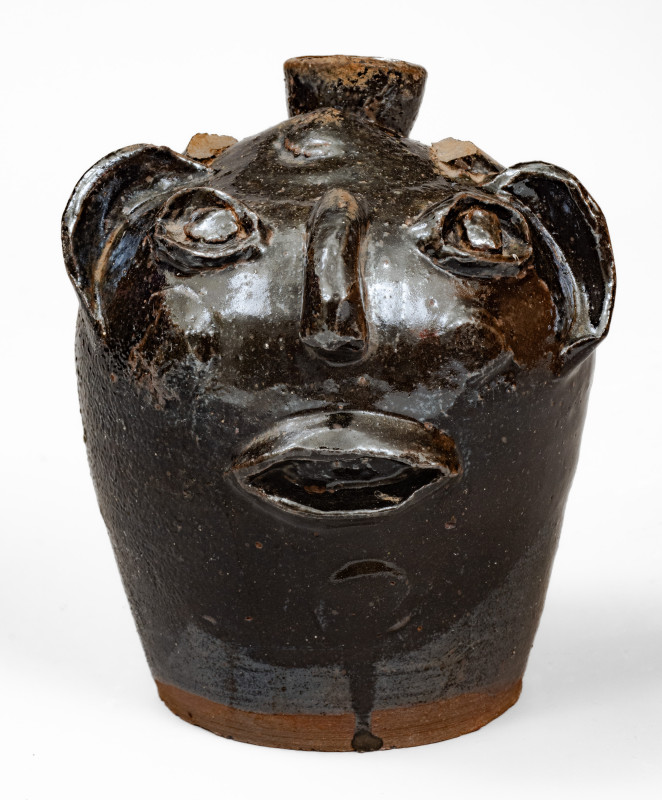Very Rare Lidded Stoneware Jar with Alkaline Glaze, Stamped "RICH WILLIAMS," Gowensville area, Greenville County, SC origin, late 19th or early 20th century, ovoid jar with tooled shoulder and pronounced, flaring rim with inner ledge for lid, the surface covered in a blackish alkaline glaze. Base impressed with the mark of African-American potter, Richard "Rich" Williams. Retains original lid with rounded finial and matching glaze. Williams is distinguished as one of a few African-American potters to own his own pottery or sign his ware. Photographs taken of Williams in his shop around the early 1900's--one of which is illustrated on p. 89 of Cinda K. Baldwin's Great & Noble Jar--are regarded as the only period photos of an African-American potter at work. This jar is highly important because of its impressed maker's mark. While a number of unsigned Williams pieces have been documented, very few examples are known bearing the potter's impressed signature. When found, the maker's mark typically reads "WILLIAMS" at the vessel's base. This jar, however, includes the potter's full name, "RICH WILLIAMS," a lesser-seen mark that we have seen on only a few other examples. It appears that two individual stamps, one for "RICH" and another for "WILLIAMS" were used to create this mark. The fact that other examples only bear the stamp "WILLIAMS" suggests that the "RICH" stamp may have been lost by the time they were made. According to Baldwin, Williams is listed in the 1900 U.S. Federal Census as a farmer, age fifty, living in the Gowensville area of Greenville County, SC and owning a farm. Baldwin notes that Williams is possibly related to freed black Edgefield potter, Millage Williams, who is listed in the 1880 Census as living in Shaw's Creek Township, Aiken County, SC. A Rich Williams jar, illustrated on p. 161 of Baldwin and bearing a "WILLIAMS" mark, exhibits stamping closely related to the well-known "Landrum cross" from Edgefield, indicating a possible connection to that region's potting tradition (Baldwin, pp. 128, 160, 161). This lot features a more bulbous body and stylishly-potted rim than other related Williams jars that we have offered in the past. It is also the first that we have seen including its original lid, a rare survivor. Provenance: From a fifty-year SC collection. Jar with rim chips, a thin 3 1/2" crack from rim, a thin 1 1/4" crack from rim, some typical wear to inner rim for lid, and minor wear to exterior. Lid with a large 1 1/2" edge chip and some smaller chips and wear to edge. H (including lid) 7".









